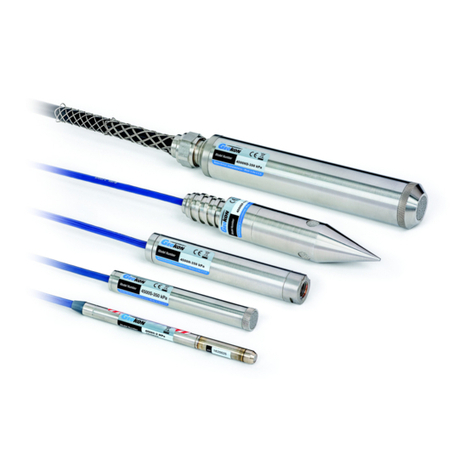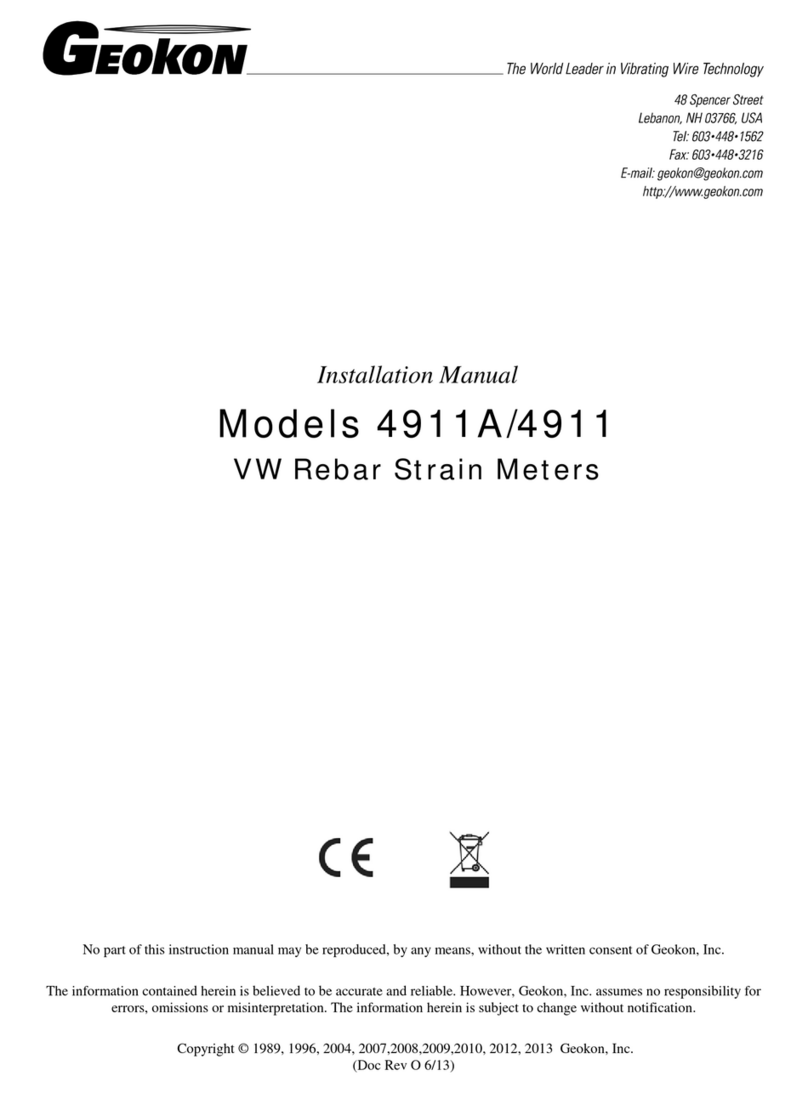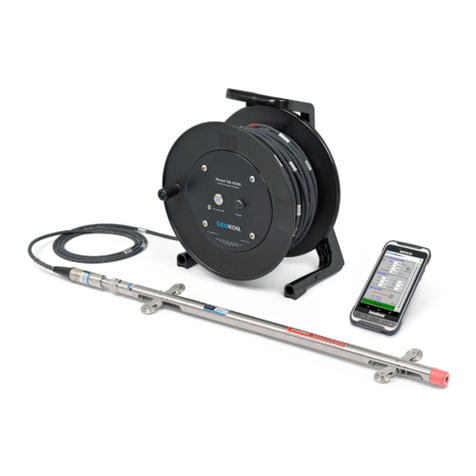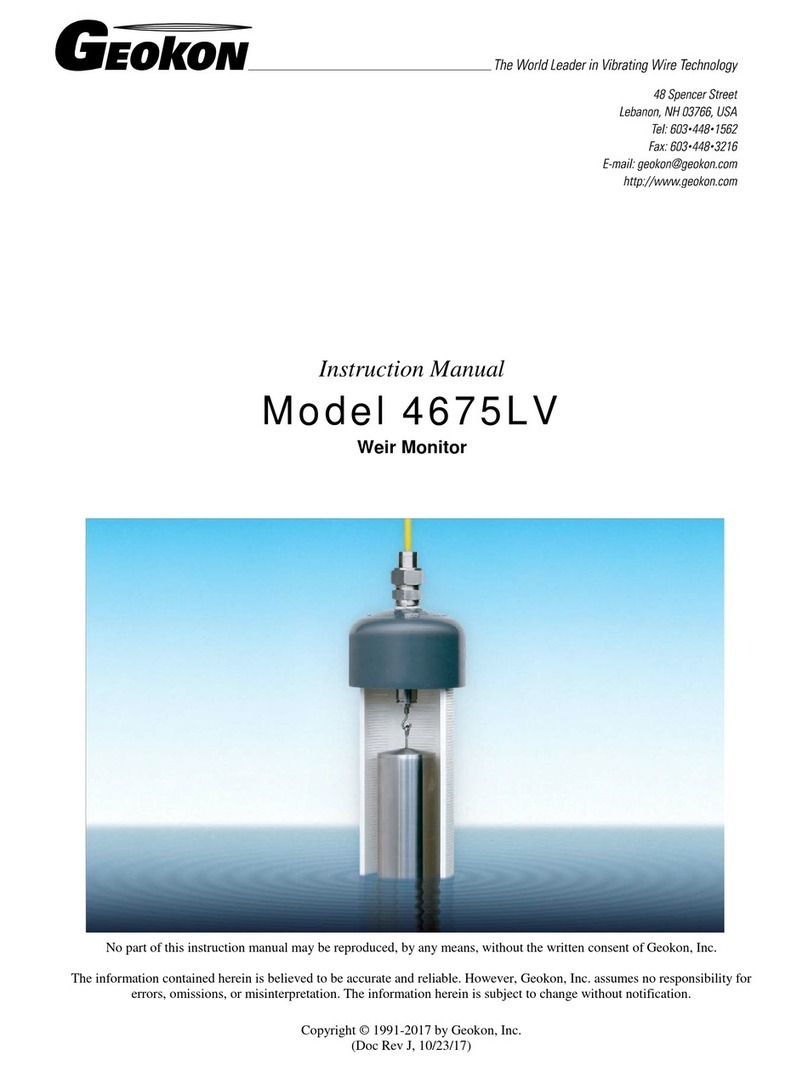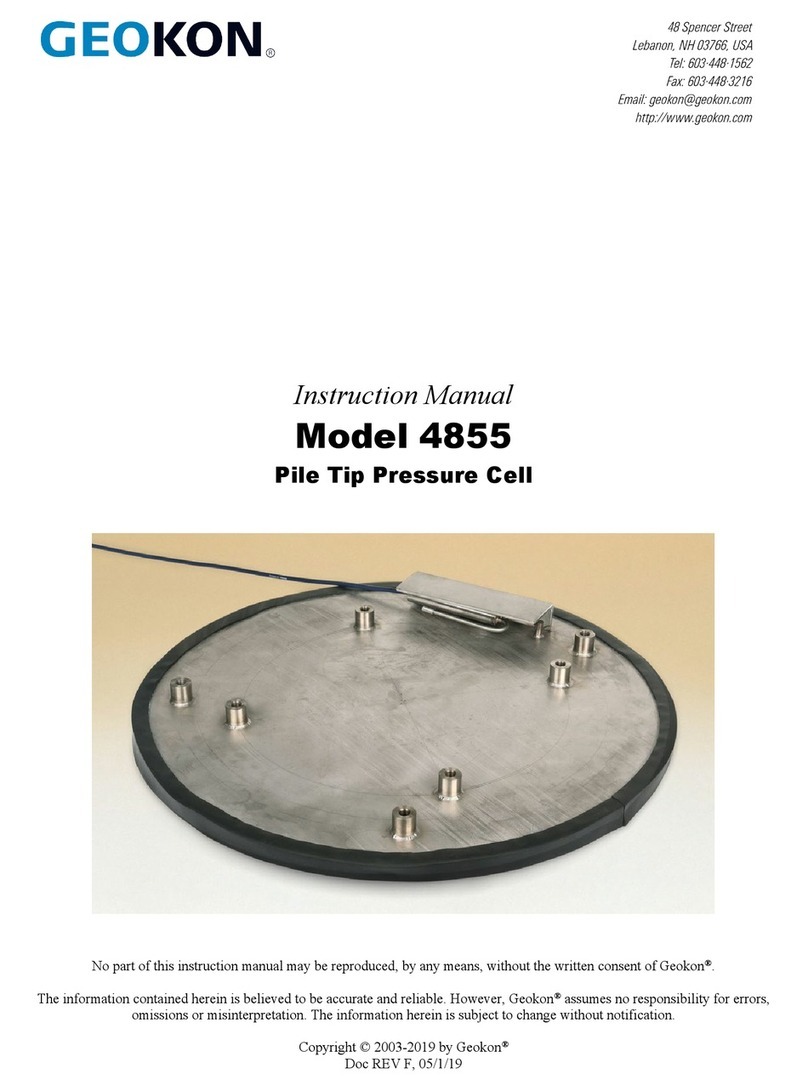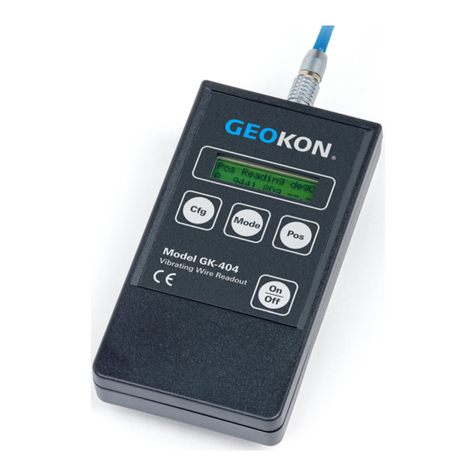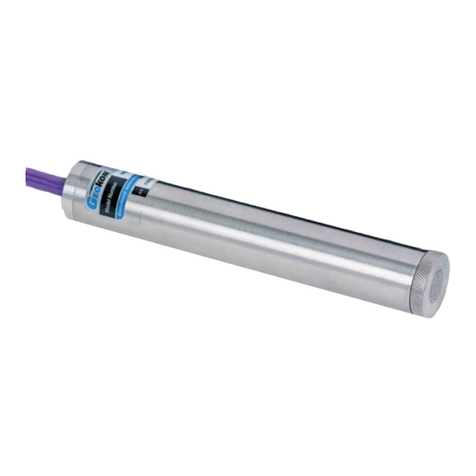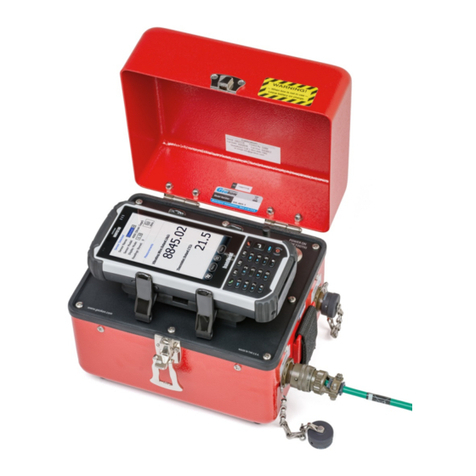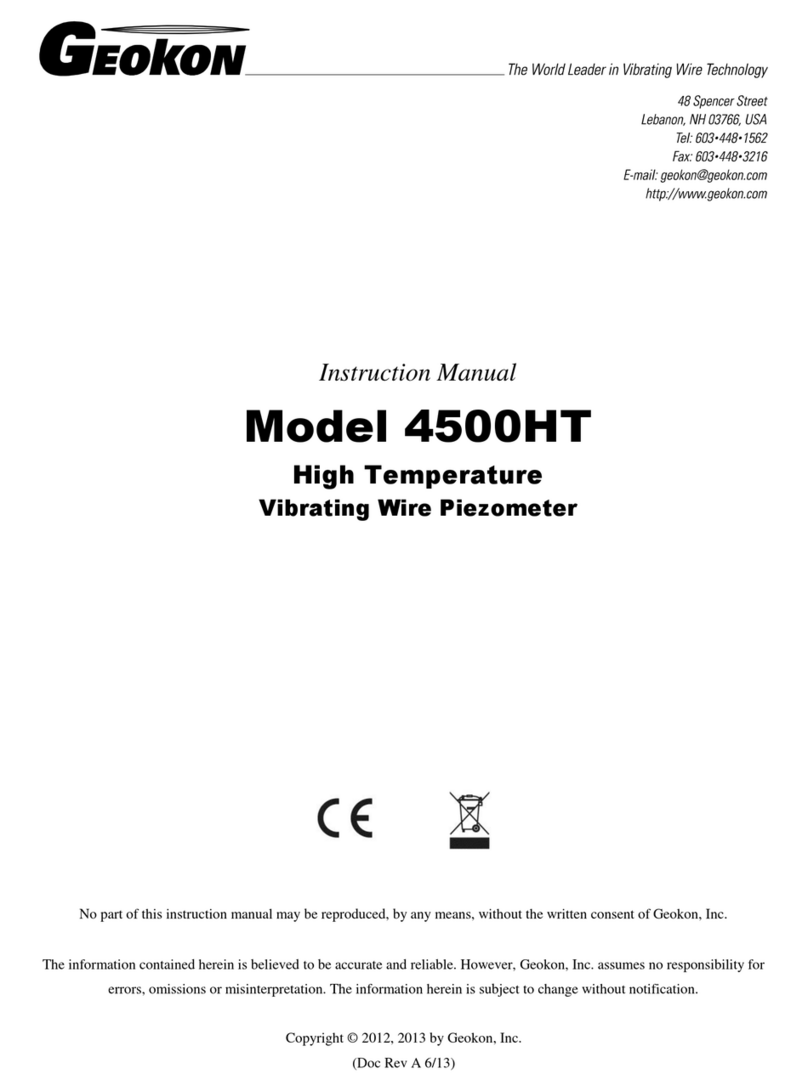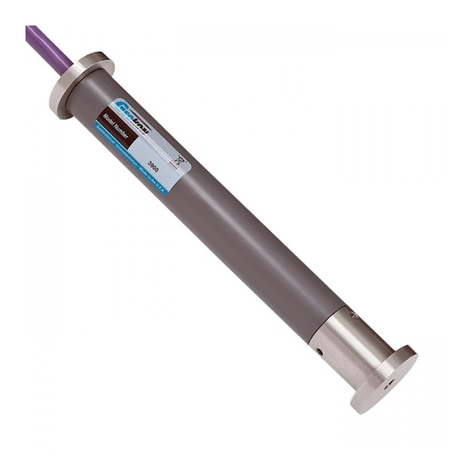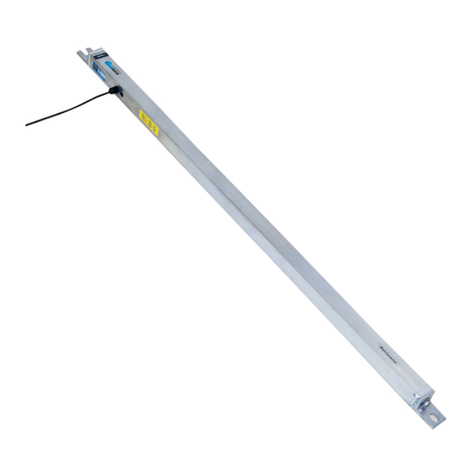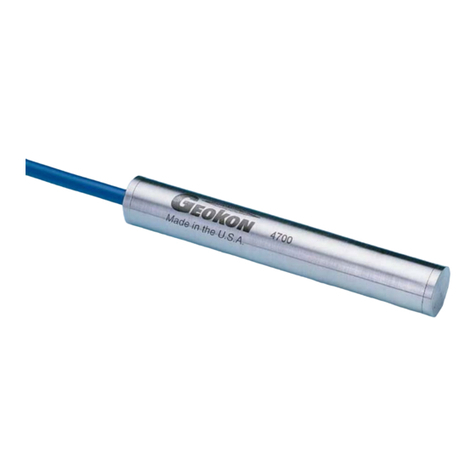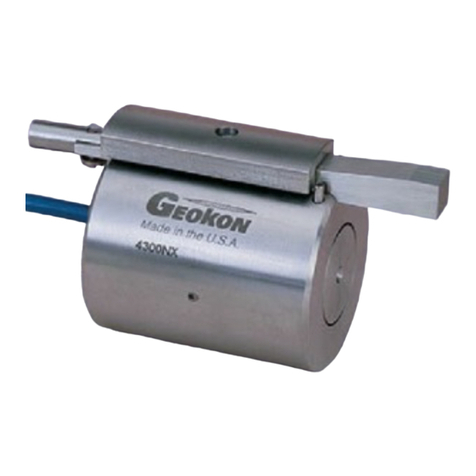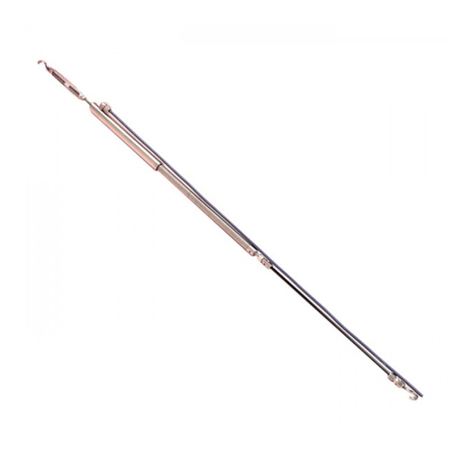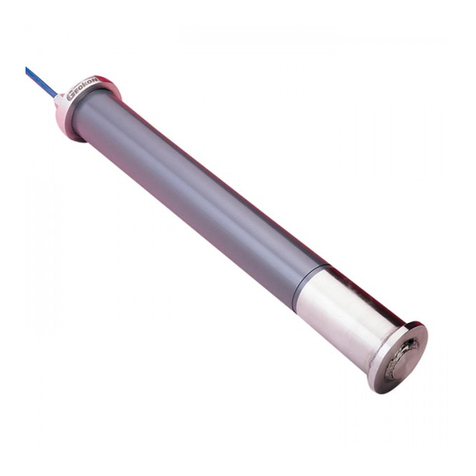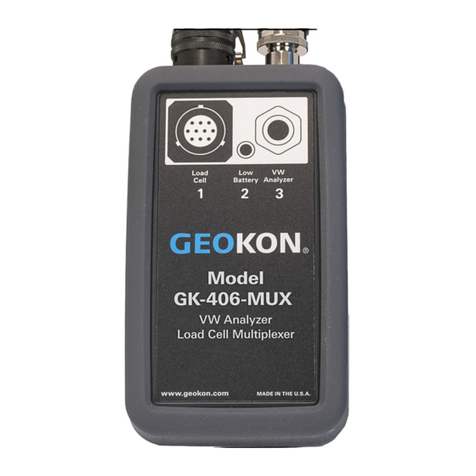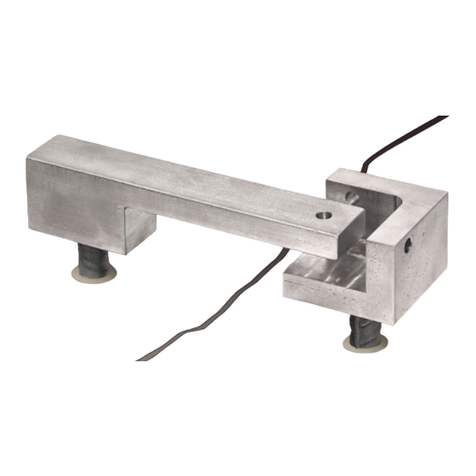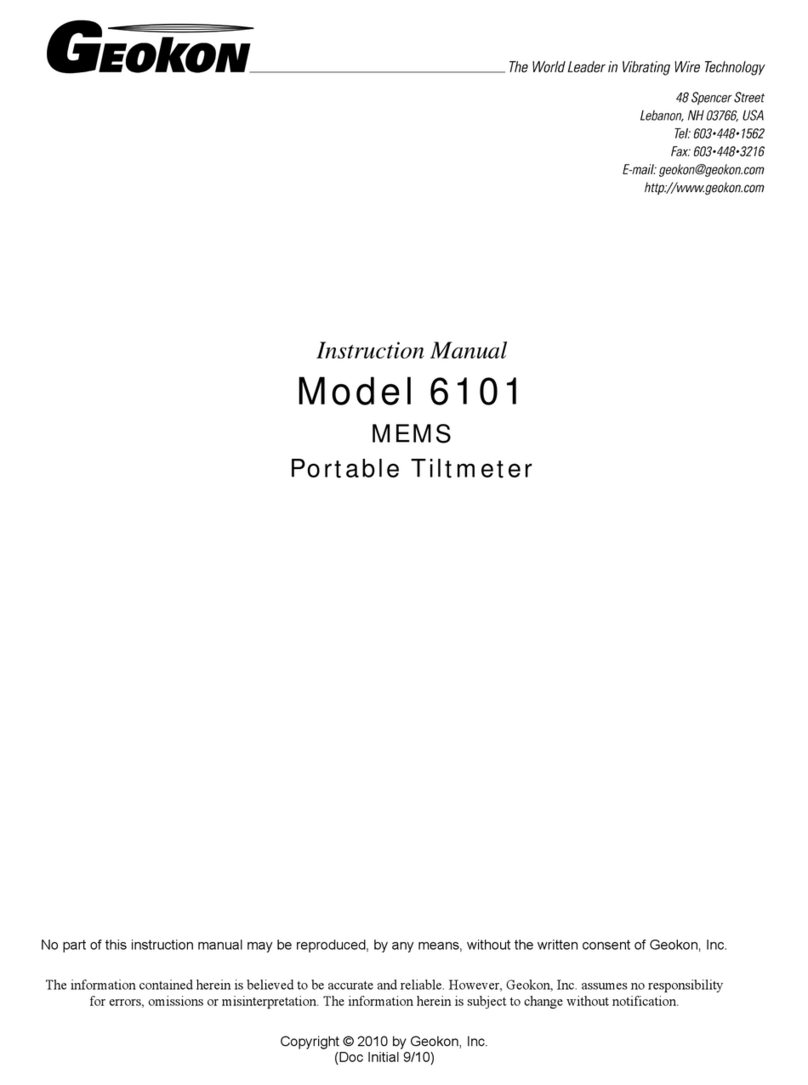
1THEORY OF OPERATION .................................................................................................................... 1
1.1 INTRODUCTION....................................................................................................................................................1
1.2 SYSTEM COMPONENTS..........................................................................................................................................1
1.2.1 Head Assembly.......................................................................................................................................2
1.2.2 Coupling, Standpipe, and Flange ...........................................................................................................3
1.2.3 Vibrating Wire Displacement Transducers ............................................................................................4
1.2.4 Connecting Rods ....................................................................................................................................5
1.2.5 Borehole Anchors...................................................................................................................................6
2INSTALLATION CONSIDERATIONS ....................................................................................................... 9
2.1 TOOLS................................................................................................................................................................9
2.1.1 P/N 1100-TOOLKIT (Set of installation tools).........................................................................................9
2.1.2 P/N 1100-RECESSED-TOOLS (Accessories for recessed installations)...............................................9
2.1.3 P/N 1100-GROUT-DOWN (Accessories for inclined downward installations) ....................................9
2.1.4 P/N 1100-GROUT-UP (Accessories for overhead/upward installations) .............................................9
2.2 BOREHOLE DIAMETER .........................................................................................................................................10
2.2.1 Extensometers without an Over Core ..................................................................................................10
2.2.2 Extensometers Recessed in an Over Core Borehole .............................................................................11
2.3 ANCHOR SPACING ..............................................................................................................................................13
2.4 CABLE INSTALLATION AND SPLICING .......................................................................................................................13
3ASSEMBLY AND INSTALLATION .........................................................................................................15
3.1 PREPARATION....................................................................................................................................................15
3.2 CONNECTING ROD ASSEMBLY...............................................................................................................................15
3.2.1 Stainless Steel Connecting Rods...........................................................................................................15
3.2.2 For All Anchor Types: ...........................................................................................................................19
3.2.3 Fiberglass Connecting Rods .................................................................................................................20
3.3 ATTACH EXTENSION RODS TO CONNECTING ROD COLUMN ........................................................................................20
3.4 INSTALL HYDRAULIC LINES (HYDRAULIC ACTUATED ANCHORS ONLY)............................................................................21
3.5 BUNDLE THE RODS AND ANCHORS TOGETHER..........................................................................................................21
3.6 INSTALL GROUT PIPE (GROUTED BOREHOLES/CASING ONLY) .....................................................................................21
3.7 PVC STANDPIPE AND COUPLING ASSEMBLY ............................................................................................................21
3.8 FLANGE INSTALLATION ........................................................................................................................................21
3.9 LIFTING THE EXTENSOMETER ASSEMBLY INTO THE BOREHOLE .....................................................................................22
3.10 SETTING ANCHORS.........................................................................................................................................22
3.10.1 Groutable Anchors ..........................................................................................................................22
3.10.2 Hydraulic Anchors (Bladder and Borros Style) ................................................................................23
3.11 REMOVE ANCHOR HARDWARE.........................................................................................................................23
3.12 ATTACH THE TRANSDUCER HOUSING ASSEMBLY ..................................................................................................24
3.13 INSTALLING THE VIBRATING WIRE TRANSDUCERS.................................................................................................24
3.14 INSTRUMENT HEAD PROTECTION ......................................................................................................................26
4TAKING READINGS ...........................................................................................................................26
4.1 ELECTRONIC READINGS........................................................................................................................................26
4.1.1 Readout Box.........................................................................................................................................26
5TROUBLESHOOTING.........................................................................................................................27
APPENDIX A. SPECIFICATIONS....................................................................................................................28
A.1 MODEL 1100 SPECIFICATIONS .................................................................................................................................28
A.2 ROD SPECIFICATIONS..............................................................................................................................................28
A.3 MODEL 4450 VIBRATING WIRE TRANSDUCER SPECIFICATIONS.......................................................................................28
A.4 HEAD ASSEMBLY DIMENSIONS .................................................................................................................................29
APPENDIX B. THERMISTOR TEMPERATURE DERIVATION ..............................................................................31
APPENDIX C. WIRING CHARTS FOR VIBRATING WIRE TRANSDUCERS .............................................................32
